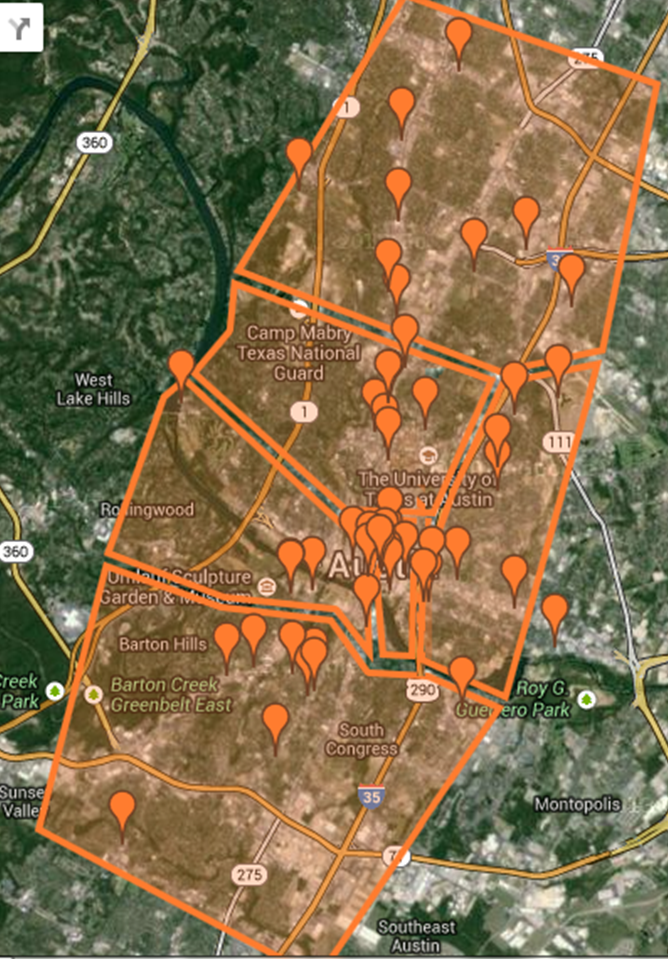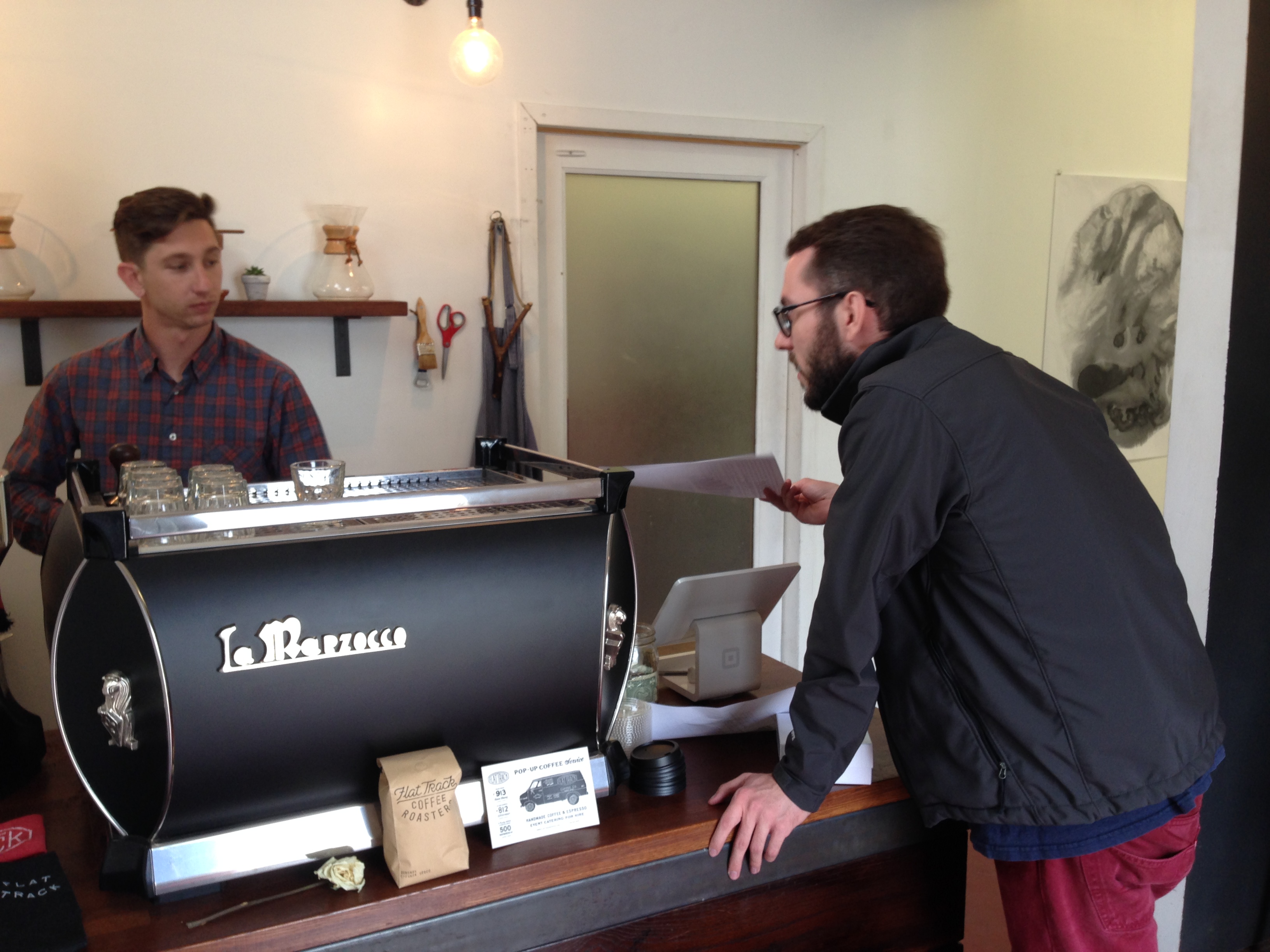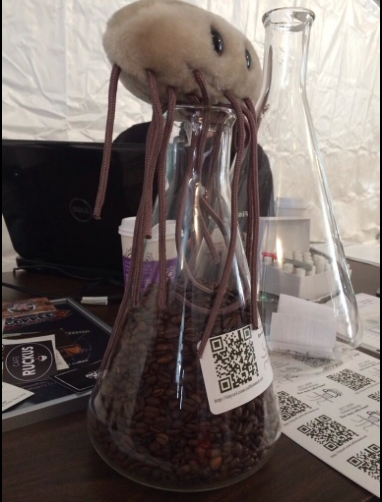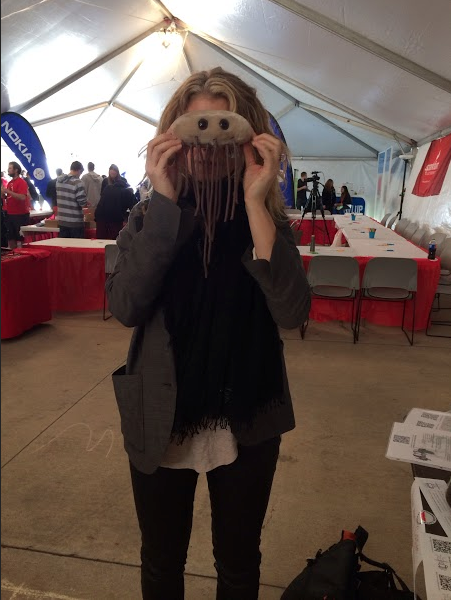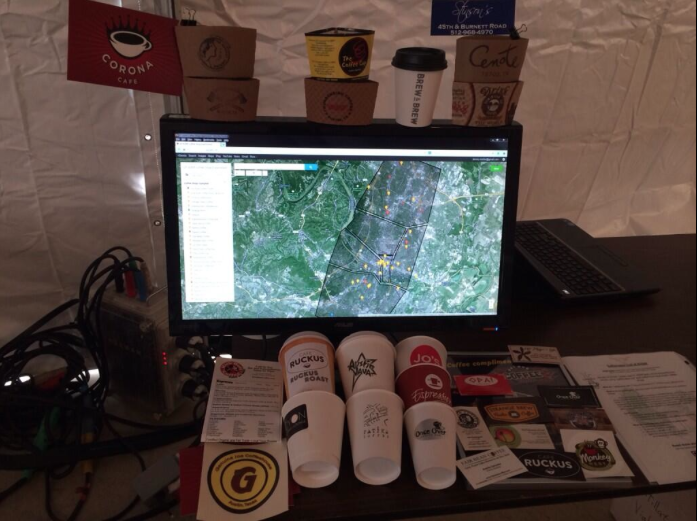Team:Austin Texas/human practices
From 2014.igem.org
(→Measuring Caffeine Content) |
(→SXSW Create) |
||
| Line 113: | Line 113: | ||
== SXSW Create == | == SXSW Create == | ||
| - | + | In March 2014, we presented this data set at the SXSW festival. As part of this outreach, we explained our project and synthetic biology to a wide range of people. Many people who came by had little to no background in science or technology, and even most of the ones who did did not have a thorough understanding of what synthetic biology was or how it could be helpful. By discussing our experiments with bacteria and coffee, an interesting and easy-to-understand application, we were able to explain the basic concepts of synthetic biology and how it can be used in a beneficial way. Occasionally, these conversations would branch out into wider topics of science and technology. | |
[[file:SXSWcreatetable.JPG|left| 500px| Table at SXSW]] | [[file:SXSWcreatetable.JPG|left| 500px| Table at SXSW]] | ||
| - | |||
| - | People also were extremely curious as to why the Wright Bros. Brew & Brew sample had a significantly | + | People were particularly interested in the different types of coffee that yielded unexpected results or results that clashed with preconceptions. For example, we tested a Light Roast and Dark roast from the same coffee shop, Epoch. Most people, when asked if they knew the difference between the roasts would respond that the "dark/light roast had more caffeine", but in reality the caffeine content in the two roasts was indistinguishable; the light roast had a tiny bit more--but not enough to claim a significant difference. |
| + | |||
| + | --- Is this (below) an accurate description? If so, we should edit the tone a bit and we can include it: | ||
| + | |||
| + | Some people claimed that longer roasting destroyed the caffeine (and swore by cold-press coffee!), some people guessed that perhaps the dark roast sample had less coffee beans in it when it was brewed. Nevertheless, after much research by the team after the event, it was concluded that [http://en.wikipedia.org/wiki/Coffee_roasting coffee roasting] and [http://en.wikipedia.org/wiki/Coffee_preparation#Brewing coffee brewing] are largely variable processes, and caffeine content can vary significantly from batch to batch of beans. For more information about light roast vs. dark roast see this article at [http://www.scribblerscoffee.com/coffees_caffeine.htm Scribblers Coffee], which discusses the nuances between the two! | ||
| + | |||
| + | People also were extremely curious as to why the Wright Bros. Brew & Brew sample had a significantly higher amount of caffeine. This data point resulted in one of the owners of Wright Bros. Brew & Brew contacting us, to understand our process of determining caffeine content and why they were so far outside the mean. The owner, Matt Wright, concluded, after discussing our project and the coffee brewing process, that the specific pot of coffee was probably just not fully drained, i.e. there was less water in the batch than normal, resulting in a higher caffeine/volume content. This was just a starting point though as the conversation with Mr. Wright spanned the entire process of making coffee, quality control, and a little bit of the science behind the process. It also developed a nice contact point for future continuation of science and coffee. | ||
| + | |||
| + | However, similar conversations involving science, synthetic biology, coffee, and the community were had throughout the entire process. The various coffee shop owners and baristas were curious if they could employ science to help them make a better drink or a more customizable product. Some of the SXSW attendees were in the coffee-making business and were interested in thinking about whether such science could be used to understand where the caffeine goes during each step in the coffee-making process. And, a number of individuals who home brew coffee of kombucha or other organic drinks wondered if we could test their samples to determine the amount of caffeine they have in their beverages. We, of course, said yes! | ||
| + | |||
[[file:e.coliplush.png|thumb|right| Coffee bean counting contest]] | [[file:e.coliplush.png|thumb|right| Coffee bean counting contest]] | ||
To involve everyone attending the event and raise more awareness for the iGEM team, we held a contest in which patrons attending the event could enter to win an ''E. coli'' plush upon following us on [https://twitter.com/UT_iGEM Twitter.] | To involve everyone attending the event and raise more awareness for the iGEM team, we held a contest in which patrons attending the event could enter to win an ''E. coli'' plush upon following us on [https://twitter.com/UT_iGEM Twitter.] | ||
| Line 123: | Line 131: | ||
[[file:Ingram.JPG|thumb|left| Special thanks to [https://twitter.com/krening Karen Ingram] for giving us this amazing opportunity to participate at SXSW Create 2014!]] | [[file:Ingram.JPG|thumb|left| Special thanks to [https://twitter.com/krening Karen Ingram] for giving us this amazing opportunity to participate at SXSW Create 2014!]] | ||
| - | |||
| - | |||
== Photographs == | == Photographs == | ||
Revision as of 14:42, 16 October 2014
| |||||||||||||||||||||||||||||
 "
"


